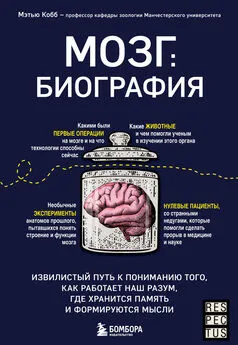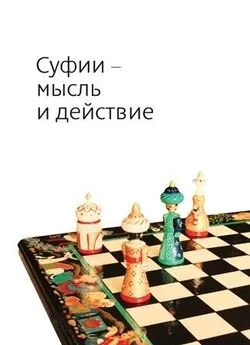Барбара Тверски - Ум в движении [Как действие формирует мысль] [litres]
- Название:Ум в движении [Как действие формирует мысль] [litres]
- Автор:
- Жанр:
- Издательство:Литагент Альпина
- Год:2020
- Город:Москва
- ISBN:978-5-0013-9354-2
- Рейтинг:
- Избранное:Добавить в избранное
-
Отзывы:
-
Ваша оценка:
Барбара Тверски - Ум в движении [Как действие формирует мысль] [litres] краткое содержание
Книга известного когнитивного психолога Барбары Тверски посвящена пространственному мышлению. Это мышление включает в себя конструирование «в голове» и работу с образами в отношении не только физического пространства, но и других его видов – пространств социального взаимодействия и коммуникации, жестов, речи, рисунков, схем и карт, абстрактных построений и бесконечного поля креативности. Ключевая идея книги как раз и состоит в том, что пространственное мышление является базовым, оно лежит в основе всех сфер нашей деятельности и всех ситуаций, в которые мы вовлекаемся.
Доступное и насыщенное юмором изложение серьезного, для многих абсолютно нового материала, а также прекрасные иллюстрации привлекут внимание самых взыскательных читателей. Они найдут в книге как увлекательную конкретную информацию о работе и развитии пространственного мышления, так и важные обобщения высокого уровня, воплощенные в девять законов когниции.
Ум в движении [Как действие формирует мысль] [litres] - читать онлайн бесплатно ознакомительный отрывок
Интервал:
Закладка:
Деревья как визуализации
Lima, M. (2014). The book of trees: Visualizing branches of knowledge . Princeton, NJ: Princeton Architectural Press.
Шесть ступеней отчуждения
Dodds, P. S., Muhamad, R., & Watts, D. J. (2003). An experimental study of search in global social networks. Science , 301(5634), 827–829.
Travers, J., & Milgram, S. (1967). The small world problem. Psychology Today , 1(1), 61–67.
Социальные сети
Henderson, M. D., Fujita, K., Trope, Y., & Liberman, N. (2006). Transcending the “here”: The effect of spatial distance on social judgment. Journal of Personality and Social Psychology , 91(5), 845.
Yu, L., Nickerson, J. V., & Tversky, B. (2010, August 9–11). Discovering perceptions of personal social networks through diagrams. In A. K. Goel, M. Jamnik, & N. H. Narayanan (Eds.), Diagrammatic representation and inference: 6th International Conference, Diagrams 2010, Portland, OR, USA, August 9–11, 2010, Proceedings (pp. 352–354). Berlin, Germany: Springer-Verlag Berlin Heidelberg. doi:10.1007/978–3–642–14600–8_50.
Создание визуализации в форме дерева
Munzner, T. (2014). Visualization analysis and design . Boca Raton, FL: CRC Press.
Shneiderman, B. (1992). Tree visualization with tree-maps: 2-d space-filling approach. ACM Transactions on Graphics (TOG) , 11(1), 92–99.
Древние изображения времени на линии
Hassig, R. (2001). Time, history, and belief in Aztec and colonial Mexico . Austin: University of Texas.
Sharer, R. J., & Traxler, L. P. (2006). The ancient Maya . Stanford, CA: Stanford University Press.
Smith, W. S., & Simpson, W. K. (1998). The art and architecture of ancient Egypt . New Haven, CT: Yale University Press.
Смешанные метафоры времени
New York Times . (2017, November 26). Weekend briefing newsletter.
Метафоры движения эго или движения времени
Boroditsky, L. (2000). Metaphoric structuring: Understanding time through spatial metaphors. Cognition , 75(1), 1–28.
Clark, H. H. (1973). Time, space, semantics, and the child. In T. E. Moore (Ed.), Cognitive development and the acquisition of language (pp. 27–63). New York, NY: Academic Press.
McGlone, M. S., & Harding, J. L. (1998). Back (or forward?) to the future: The role of perspective in temporal language comprehension. Journal of Experimental Psychology: Learning, Memory, and Cognition , 24, 1211–1223.
Время структурируется пространством (а не наоборот)
Boroditsky, L. (2000). Metaphoric structuring: Understanding time through spatial metaphors. Cognition , 75(1), 1–28.
Язык и пространство
Clark, H. H. (1973). Space, time, semantics, and the child. In T. E. Moore (Ed.), Cognitive development and the acquisition of language (pp. 27–63). New York, NY: Academic Press.
Talmy, L. (1983). How language structures space. In H. L. Pick Jr. & L. P. Acredolo (Eds.), Spatial orientation: Theory, research and application (pp. 225–282). New York, NY: Plenum.
Жесты меняют мышление о времени
Jamalian, A., & Tversky, B. (2012). Gestures alter thinking about time. In N. Miyake, D. Peebles, & R. P. Cooper (Eds.), Proceedings of the Cognitive Science Society , 34, 551–557.
Искажения в воспоминаниях о событиях во времени
Huttenlocher, J., Hedges, L. V., & Prohaska, V. (1988). Hierarchical organization in ordered domains: Estimating the dates of events. Psychological Review , 95, 471–484.
Loftus, E. F., & Marburger, W. (1983). Since the eruption of Mt. St. Helens, has anyone beaten you up? Improving the accuracy of retrospective reports with landmark events. Memory and Cognition , 11, 114–120.
Гомеостаз
Bernard, C. (1927). An introduction to the study of experimental medicine . Translated by H. C. Greene. New York, NY: Macmillan. (Оригинальное издание было опубликовано в 1865 г.)
Cannon, W. B. (1963). The wisdom of the body . New York, NY: Norton Library. (Первое издание было опубликовано в 1932 г.)
Обратная связь в компьютерах
Wiener, N. (1961). Cybernetics or control and communication in the animal and the machine (Vol. 25). Cambridge, MA: MIT Press.
В языке аймара прошлое впереди
Núñez, R., & Cooperrider, K. (2013). The tangle of space and time in human cognition. Trends in Cognitive Sciences , 17(5), 220–229.
Núñez, R. E., & Sweetser, E. (2006). With the future behind them: Convergent evidence from Aymara language and gesture in the crosslinguistic comparison of spatial construals of time. Cognitive Science , 30(3), 401–450.
В китайском литературном языке (и календарях) прошлое может быть внизу
Boroditsky, L. (2001). Does language shape thought? Mandarin and English speakers’ conceptions of time. Cognitive Psychology , 43(1), 1–22.
Fuhrman, O., McCormick, K., Chen, E., Jiang, H., Shu, D., Mao, S., & Boroditsky, L. (2011). How linguistic and cultural forces shape conceptions of time: English and Mandarin time in 3D. Cognitive Science , 35(7), 1305–1328.
Направление времени – это направление письма
Tversky, B., Kugelmass, S., & Winter, A. (1991). Cross-cultural and developmental trends in graphic productions. Cognitive Psychology , 23(4), 515–557.
Обозначение времени жестом слева направо
Santiago, J., Lupáñez, J., Pérez, E., & Funes, M. J. (2007). Time (also) flies from left to right. Psychonomic Bulletin & Review , 14(3), 512–516.
Перспектива в письменных и устных языках
Emmorey, K., Tversky, B., & Taylor, H. A. (2000). Using space to describe space: Perspective in speech, sign, and gesture. Spatial Cognition and Computation , 2(3), 157–180.
Символическая дистанция
Banks, W. P., & Flora, J. (1977). Semantic and perceptual processes in symbolic comparisons. Journal of Experimental Psychology: Human Perception and Performance , 3, 278–290.
Holyoak, K. J., & Mah, W. A. (1981). Semantic congruity in symbolic comparisons: Evidence against an expectancy hypothesis. Memory and Cognition , 9, 197–204.
Moyer, R. S. (1973). Comparing objects in memory: Evidence suggesting an internal psychophysics. Perception and Psychophysics , 1, 180–184.
Paivio, A. (1978). Mental comparisons involving abstract attributes. Memory and Cognition , 6, 199–208.
Символическая дистанция у других биологических видов
D’Amato, M. R., & Colombo, M. (1990). The symbolic distance effect in monkeys ( Cebus paella ). Animal Learning & Behavior , 18, 133–140.
Gelman, R., & Gallistel, C. R. (2004). Language and the origin of numerical concepts. Science , 306(5695), 441–443.
Транзитивный логический вывод у других биологических видов
Bond, A. B, Kamil, A. C, & Balda, R. P. (2003). Social complexity and transitive inference in corvids. Animal Behavior , 65, 479–487.
Byrne, R. W., & Bates, L. A. (2007). Sociality, evolution and cognition. Current Biology , 17, 714–723.
Byrne, R. W. & Whiten, A. (1988). Machiavellian intelligence: Social expertise and the evolution of intellect in monkeys, apes, and humans . Oxford, England: Clarendon Press.
Davis, H. (1992). Transitive inference in rats ( Rattus norvegicus ). Journal of Comparative Psychology , 106, 342–349.
Grosenick, L., Clement, T. S., & Fernald, R. D. (2007). Fish can infer social rank by observation alone. Nature , 445, 429–432.
MacLean, E. L., Merritt, D. J., & Brannon, E. M. (2008). Social complexity predicts transitive reasoning in Prosimian primates. Animal Behavior , 76, 479–486.
Von Fersen, L., Wynee, C. D. L., Delius, J. D., & Staddon, J. E. R. (1991). Transitive inference formation in pigeons. Journal of Experimental Psychology: Animal Behavior Processes , 17, 334–341.
Система приблизительных количеств у детей и представителей других биологических видов
Brannon, E. M., & Terrace, H. S. (1998). Ordering of the numerosities 1 to 9 by monkeys. Science , 282(5389), 746–749.
Brannon, E. M., Wusthoff, C. J., Gallistel, C. R., & Gibbon, J. (2001). Numerical subtraction in the pigeon: Evidence for a linear subjective number scale. Psychological Science , 12(3), 238–243.
Cantlon, J. F., Platt, M. L., & Brannon, E. M. (2009). Beyond the number domain. Trends in Cognitive Sciences , 13(2), 83–91.
Gallistel, C. R., Gelman, R., & Cordes, S. (2006). The cultural and evolutionary history of the real numbers. Evolution and Culture , 247.
Henik, A., Leibovich, T., Naparstek, S., Diesendruck, L., & Rubinsten, O. (2012). Quantities, amounts, and the numerical core system. Frontiers in Human Neuroscience , 5, 186.
McCrink, K., & Spelke, E. S. (2010). Core multiplication in childhood. Cognition , 116(2), 204–216.
McCrink, K., & Spelke, E. S. (2016). Non-symbolic division in childhood. Journal of Experimental Child Psychology , 142, 66–82.
McCrink, K., Spelke, E. S., Dehaene, S., & Pica, P. (2013). Non-symbolic halving in an Amazonian indigene group. Developmental Science , 16(3), 451–462.
Scarf, D., Hayne, H., & Colombo, M. (2011). Pigeons on par with primates in numerical competence. Science , 334(6063), 1664–1664.
Мозговые субстраты, отвечающие за системы приблизительных количеств и точных чисел
Cohen Kadosh, R., Henik, A., Rubinsten, O., Mohr, H., Dori, H., van de Ven, V., … Linden, D. E. J. (2005). Are numbers special? The comparison systems of the human brain investigated by fMRI. Neuropsychologia , 43, 1238–1248.
Пространственно-числовые ассоциации ответных реакций (SNARC)
Dehaene, S., Bossini, S., & Giraux, P. (1993). The mental representation of parity and number magnitude. Journal of Experimental Psychology: General , 122(3), 371–396.
Tversky, B., Kugelmass, S., & Winter, A. (1991). Cross-cultural and developmental trends in graphic productions. Cognitive Psychology , 23(4), 515–557.
Бо́льшая чувствительность к меньшим значениям (закон Вебера – Фехнера)
Читать дальшеИнтервал:
Закладка:
![Обложка книги Барбара Тверски - Ум в движении [Как действие формирует мысль] [litres]](/books/1063976/barbara-tverski-um-v-dvizhenii-kak-dejstvie-formir.webp)
![Барбара Морриган - Сердце, что растопит океан [litres]](/books/1059584/barbara-morrigan-serdce-chto-rastopit-okean-litre.webp)
![Рольф Добелли - Искусство ясно мыслить [litres]](/books/1067492/rolf-dobelli-iskusstvo-yasno-myslit-litres.webp)
![Александр Кондрашов - Жизнь в движении [litres]](/books/1074016/aleksandr-kondrashov-zhizn-v-dvizhenii-litres.webp)
![Мартин Рис - Всего шесть чисел. Главные силы, формирующие Вселенную [litres]](/books/1082236/martin-ris-vsego-shest-chisel-glavnye-sily-formir.webp)
![Джон Гревилл Агард Покок - Момент Макиавелли: Политическая мысль Флоренции и атлантическая республиканская традиция [litres]](/books/1143945/dzhon-grevill-agard-pokok-moment-makiavelli-politi.webp)
![Кира Бег - Король моих мыслей [litres самиздат]](/books/1148970/kira-beg-korol-moih-myslej-litres-samizdat.webp)
![Ива Коде - Мы мыслим… [litres самиздат]](/books/1149538/iva-kode-my-myslim-litres-samizdat.webp)


